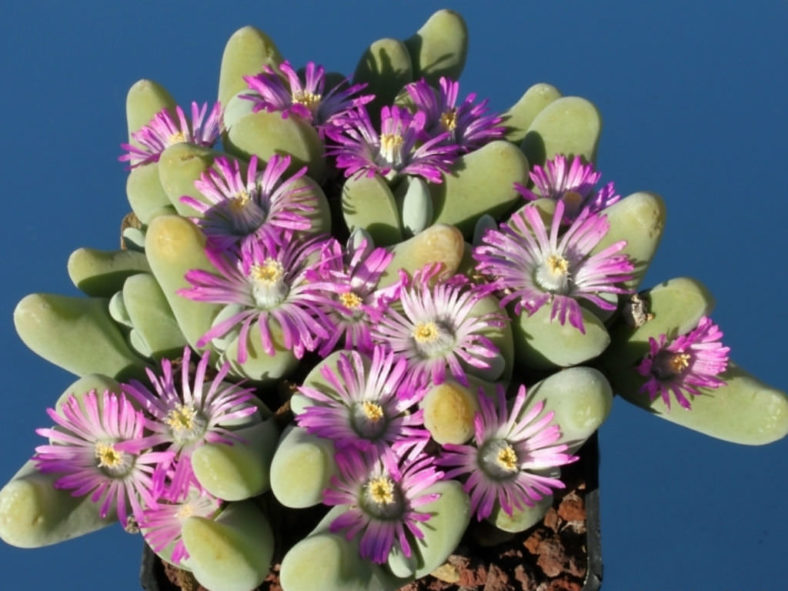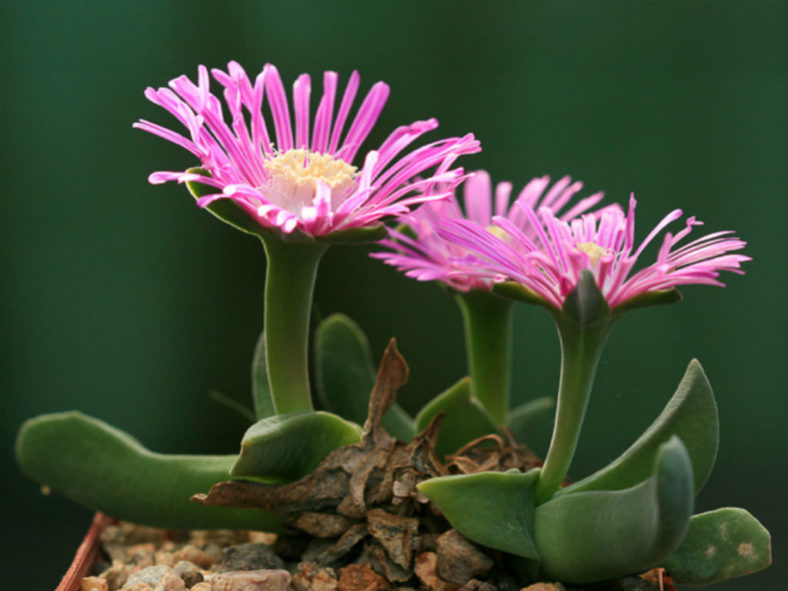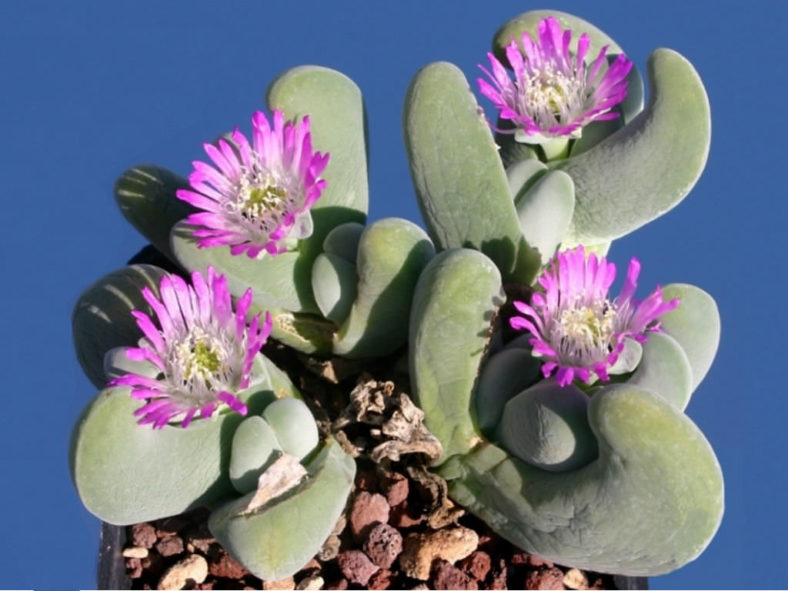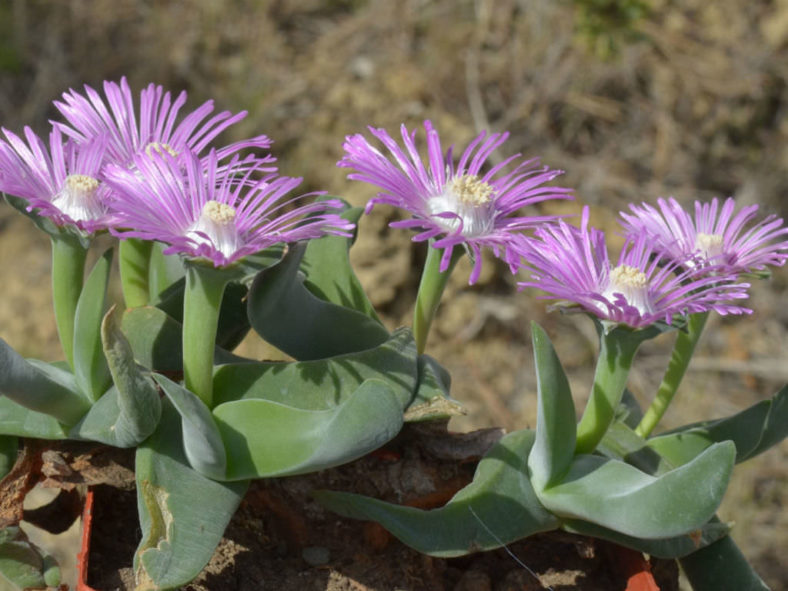Scientific Name
Gibbaeum velutinum (L.Bolus) Schwantes
Synonym(s)
Mentocalyx velutina, Mesembryanthemum velutinum
Scientific Classification
Family: Aizoaceae
Subfamily: Ruschioideae
Tribe: Ruschieae
Genus: Gibbaeum
Origin
Gibbaeum velutinum is native to South Africa. It grows on rocky sandstone slopes overlying clayey sand, with or without quartz pebbles, in Little Karoo, west of Barrydale to Muiskraal.
Description
Gibbaeum velutinum is a dwarf, clump-forming succulent with short, woody, prostrate stems and pairs of unequal, fleshy, finger-like leaves fused at the base. The leaves are grey-green, velvety, and usually 2 to 5 times as long as broad. The longer leaf can grow up to 2 inches (5 cm) long and 1.2 inches (3 cm) wide at the base, tapering to a point.
The solitary flowers are usually magenta-pink with a darker central line on the petals. They can reach up to 1.4 inches (3.5 cm) in diameter and appear on pedicels up to 1 inch (2.5 cm) long in the angle between old and new leaves from late winter to spring. The fruits are 6-locular capsules.

Hardiness
USDA hardiness zones 10a to 11b: from 30 °F (−1.1 °C) to 50 °F (+10 °C).
How to Grow and Care
Mesembs are mostly adapted to relatively predictable rainfall patterns rather than extreme drought and irregular rainfall. Total rainfall may be extremely low, but water is available at least seasonally or through fog and condensation. This leads to or allows plants that are not especially large and sometimes very small and affect the way they need to be treated in cultivation.
The care basics are simple: free-draining soil, plenty of sun and ventilation, and regular light watering in the right season. Yet the difficulties are endless, trying to adapt to the Mesembs' adaptability and follow their growth habits in your particular conditions.
These plants require a loam-based compost with extra drainage material such as horticultural grit or perlite. They all like good light conditions and plenty of ventilation.
Some are relatively cold-hardy and can even survive mild winters outside. Most will survive temperatures down to the freezing point. Some Mesembs begin to grow in the fall as the temperature drops and the days get shorter.
See more at How to Grow and Care for Mesembs.
Links
- Back to genus Gibbaeum
- Succupedia: Browse succulents by Scientific Name, Common Name, Genus, Family, USDA Hardiness Zone, Origin, or cacti by Genus
Photo Gallery
Click on a photo to see a larger version.


